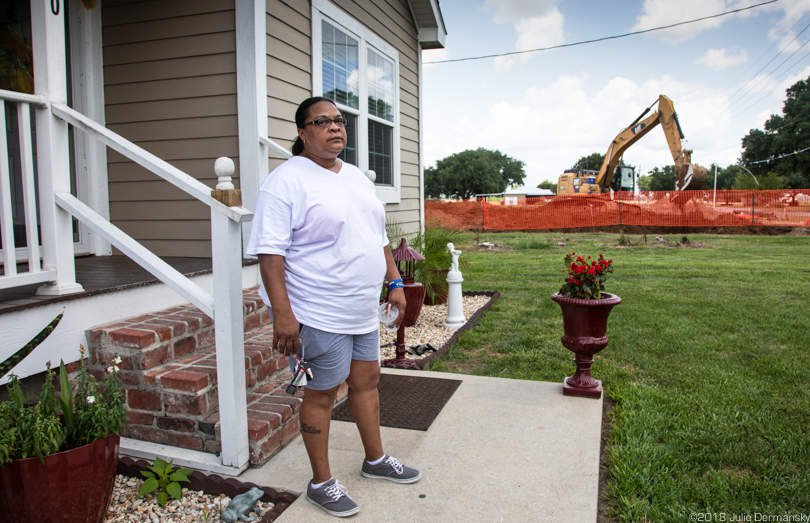
Melinda Tillies learned about the controversial Bayou Bridge pipeline the day its construction began next to her home a couple months ago. As workers prepared the site for the pipeline, the activity made it feel like an earthquake had struck her home, she said, waking her family as their home shook on its foundation, cracking walls and dislodging tiles.
Tillies lives in Youngsville, Louisiana, a suburb of Lafayette. She purchased her dream house just over a year ago, but now she regrets buying it. “The pipeline is way too close to my house for comfort. If I had any idea there would be a pipeline built next to my house, I wouldn’t have bought it,” she told me.
The pipeline, owned by Bayou Bridge Pipeline LLC, a subsidiary of Energy Transfer Partners, runs the length of Tillies’ property on her neighbor’s land, about 25 feet away from her home. The 162.5-mile pipeline is an extension of an existing one that originates in Nederland, Texas, and ends in St. Charles, Louisiana. Because it crosses state lines, the Bayou Bridge pipeline is subject to federal pipeline regulations. The project will serve as the last leg of a transportation network to move oil fracked in North Dakota (and potentially Canadian tar sands) via the Dakota Access pipeline to Louisiana’s coast for export.
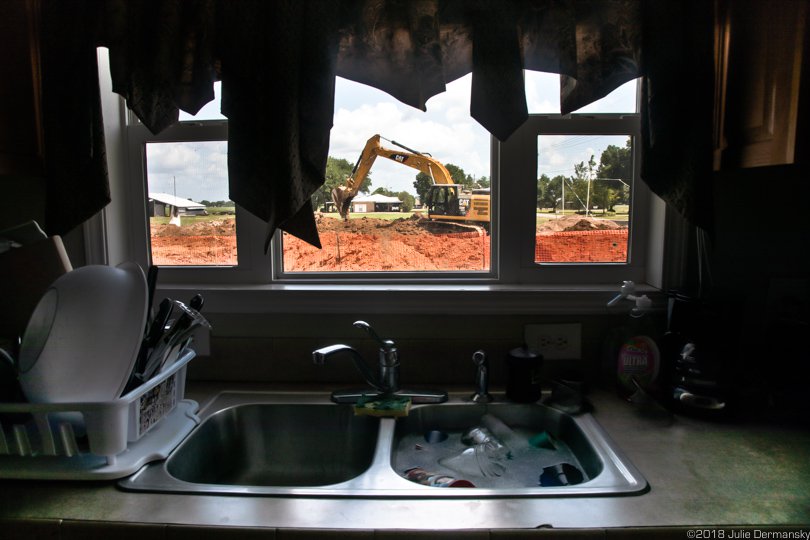
I visited Tillies on June 2 as workers were burying the pipeline. She documented the work, gathering whatever evidence she could in case she has to sue the company for the damages to her home. “I bought this house a year ago and have a report that tells how everything was fine,” she said. “Now the doors and window don’t close right and there are a lot of cracks in the walls.”
After talking to Steven P. Flynn, Bayou Bridge Pipeline’s lead right-of-way representative, Tillies thought the company would take care of the damage. She says Flynn told her to get a contractor to give her an estimate and then the company would pay to have her house fixed.
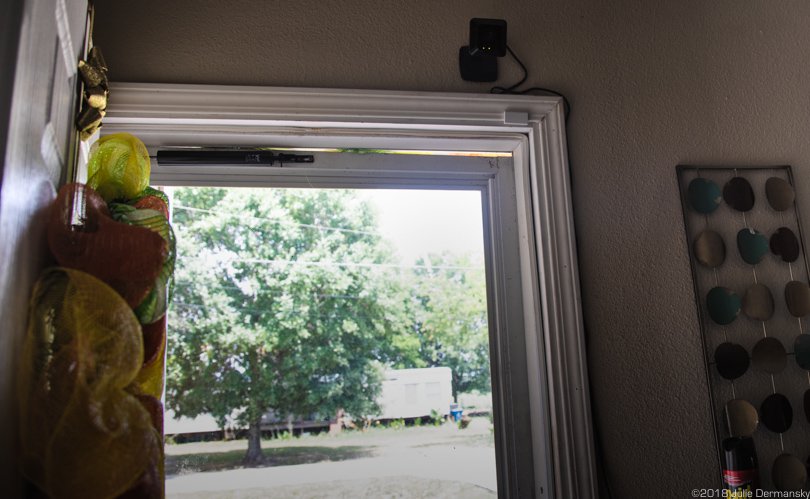
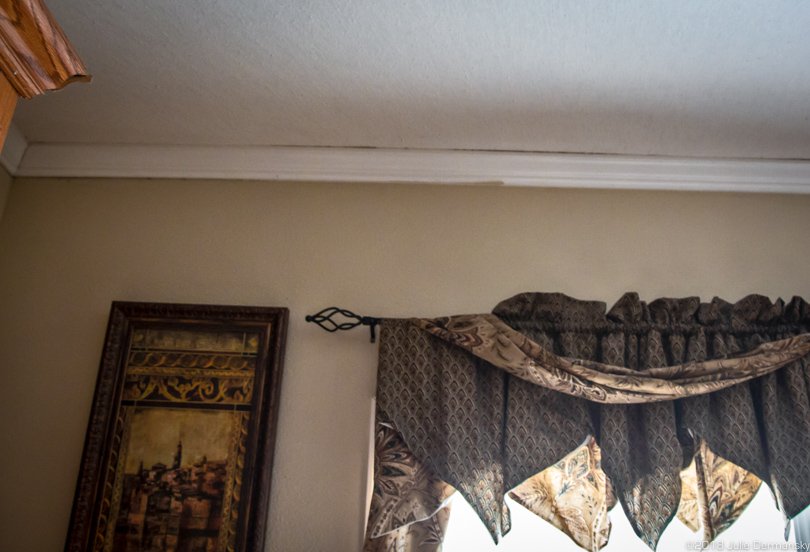
Once she got a quote for the repairs, which came to $15,050, she gave it to Flynn. He told her he wasn’t authorized to cover that amount. Tillies was shocked by Flynn’s attitude, which she found rude and dismissive. “I did what he asked me to do,” she said, “and all he could offer is to tell me I should get an attorney.”
Tillies fears the damages will be even more costly than the initial quote because she received it before the company began digging and laying the pipe. “Things have gotten worse since they put the pipe in the ground,” she said. Once the ground has settled, she plans to have a structural engineer check on the house.
I asked Energy Transfer Partners, the principal owner of the Bayou Bridge pipeline, how it plans to deal with the damage the pipeline installation caused to Tillies’ home and how it deals with damage done to property along the pipeline route in general.
“Conversations with this particular landowner are ongoing,” Energy Transfer Partners spokesperson Alexis Daniel told me. “I would reiterate that we take all landowners claims seriously, and we remain committed to treating all landowners fairly and respectfully.”
A comment Tillies finds laughable. “I asked Flynn for the number of his boss when he told me to hire a lawyer, and he wouldn’t give it to me. Does that sound like a company that is working with landowners’ issues?” she asked. “They were rude to me from the start.”
Living Next to Pipelines
Though the installation is done, the stress the project has caused Tillies hasn’t dissipated. Once the pipeline is operational, she says she will live in constant fear of an oil spill. Though she’d like to move, having a pipeline 25 feet from her kitchen window makes her doubt her ability to sell the house for the price she bought it, if she could sell it at all. “I would never buy a house this close to a pipeline,” she said.
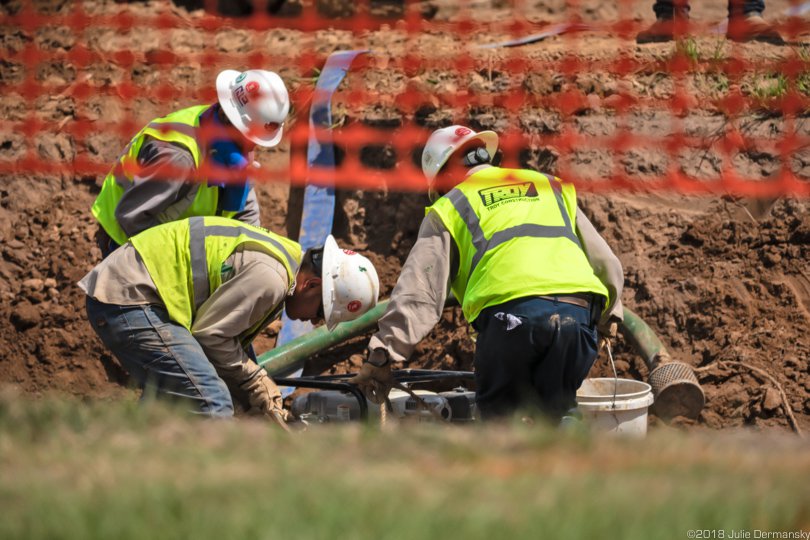
Her statement echoed one made in 2013 by Bill Lowry, a Community Liaison Service Manager with the U.S. Pipeline and Hazardous Materials Safety Administration (PHMSA), one of the federal agencies that regulates oil pipelines. While at a Public Safety Trust conference, Lowry was asked how he’d feel if the Keystone XL pipeline was being built in his backyard.
He answered: “Here is what I did when I bought my house — I looked on all the maps, I looked for all the well holes. I found there is nothing around me but dry holes and no pipelines. And it’s not because I’m afraid of pipelines, it’s not because I think something will happen. It’s because something could happen … You’re always better off, if you have a choice …”
He trailed off before finishing his sentence, but added, “If I was building a house, I wouldn’t build it on a refinery … I wouldn’t build it on a pipeline, because they’re all industrial facilities. That’s just the reality.”

Limited Information for Affected Communities
PHMSA is responsible for setting federal policies and rules for transporting oil and other hazardous materials, with the goal of preventing spills, and investigating spills once they happen. Education is also part of the agency’s mission.
Tillies had never heard of PHMSA or received any information about pipeline safety from anyone. Nor did anyone else I have spoken to that lives near the Bayou Bridge pipeline. That fact didn’t surprise Rebecca Craven, Program Director for the Pipeline Safety Trust, an organization with a stated mission to promote pipeline safety through education and advocacy.
“Unfortunately, the regulatory requirements for operators to provide community members some basic information about pipelines in their vicinity does not apply until the pipeline is operational,” she wrote via email. And in a situation like Tillies’ “where a home is very close to, but not on a right of way, there is no PHMSA regulatory requirement that they provide any information at all until they start moving product through the line.”
A landowner’s guide created by the Pipeline Safety Trust doesn’t mince words. “Every pipeline comes with certain risks of failure. As a landowner or resident with a pipeline nearby, you inevitably assume a portion of that risk.“
As landowners along pipeline routes find out, whether they have an agreement with the pipeline operator, have their land taken by eminent domain, or, in Tillies’ case, happen to live adjacent to the pipeline right-of-way, they are on the hook for resolving conflicts with the pipeline operator if something goes wrong.
“There is no governmental assistance for landowners whose property is damaged by a pipeline operator, even if that operator is licensed or certificated by a governmental agency,” Craven explained. “They all view that as a civil matter between the operator and the landowner and leave it to landowners to pursue damages against the operator.”
How Close Is Too Close?
“The federal regulations say nothing about any minimum distance away from homes that pipeline installation must occur,” according to the Pipeline Safety Trust.
And though PHMSA created the Pipeline Informed Planning Alliance (PIPA) to recommend guidelines for how close construction of new structures should be to existing pipelines, it didn’t task the Alliance with recommending how close pipelines should be installed near existing structures.
The Pipeline Safety Trust finds it “puzzling how the industry can see the importance of these types of recommendations, and not see the importance of turning them around to apply to the development of new pipelines near existing buildings.”
How close a pipeline operator chooses to build its pipelines next to existing structures is up to the operator, unless there is a local or state regulation in place, and few local rules exist because states generally follow the federal guidelines set by PHMSA. This reality has created more than one opponent to pipelines.
Growing opposition to the rush of oil and gas pipeline projects is coming not only from the “Keep it in the ground movement” that aims to stop new fossil fuel infrastructure projects but also from “Democrats and Tea Party types” who oppose using eminent domain for pipelines exporting oil and gas, and NIMBY’s (Not in My Back Yard) like Tillies.
According to Tillies, dealing with the Bayou Bridge pipeline representatives has also left a bitter taste in the mouths of her neighbors. “That is one nasty company,” Tillies said. “They turned my dream into a nightmare.” She wants other property owners to know that “if it can happen to me, it can happen to you.”
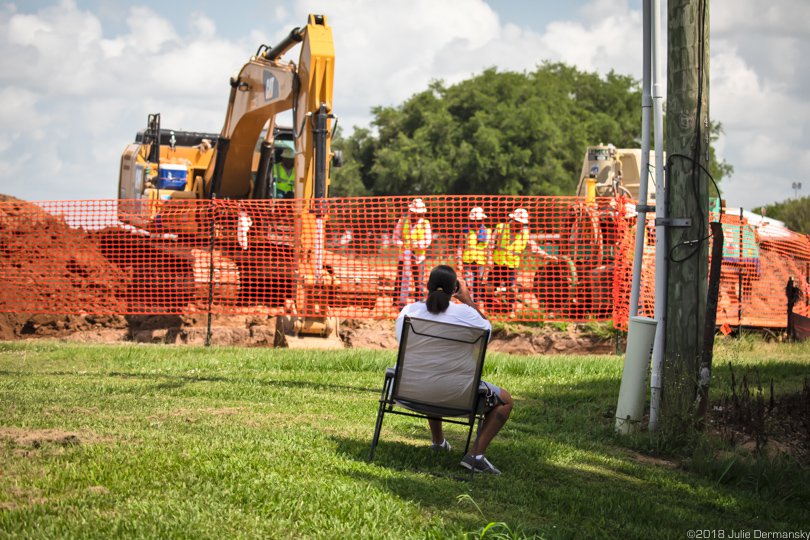

Join us in defending the truth before it’s too late
The future of independent journalism is uncertain, and the consequences of losing it are too grave to ignore. To ensure Truthout remains safe, strong, and free, we need to raise $47,000 in the next 8 days. Every dollar raised goes directly toward the costs of producing news you can trust.
Please give what you can — because by supporting us with a tax-deductible donation, you’re not just preserving a source of news, you’re helping to safeguard what’s left of our democracy.